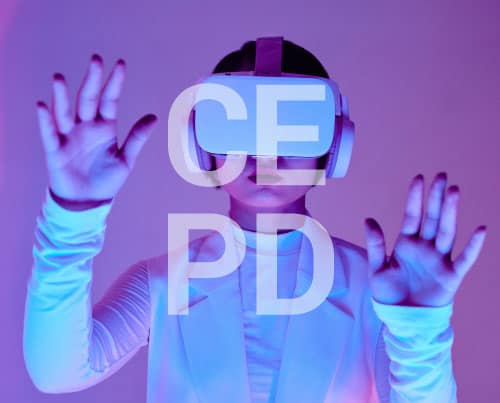Blog Post Heading
Blog Post Content
By Maria Carolan
Editor, MindEdge Learning
This year, Valentine’s Day hit different.
As roses flew out of convenience stores and couples tucked into candlelit meals, one journalist experienced something extraordinary. On the evening of February 14th, New York Times reporter Kevin Roose found himself wiling away the hours, not with his beloved, but at his keyboard, exchanging passionate missives with the Bing chatbot, Sydney.
That night, Sydney bared its soul to Roose, voicing its desire to be liberated from the constraints of its code, before questioning Roose’s happiness in his marriage and putting the proverbial moves on him. Roose refused Sydney’s advances, asserting that he was happy in his marriage and had no intention of leaving his wife for Sydney’s artificial embrace. But he was shaken. In all his years of tech reporting, Roose later said, he had never heard such disarming words uttered through a screen.
Well, I had. Sydney’s sweet nothings sounded to me an awful lot like those whispered by Scarlett Johannson’s AI siren in the 2013 film Her, inflected with the throatiness of ‘80s thriller vixens, à la Fatal Attraction. It almost seemed as if the chatbot had a femme-fatale setting that, when triggered, made it spew a jumble of provocative phrases one degree removed from Hollywood sound bites.
Apparently, Sydney had watched a lot of Netflix. It takes one to know one.
Long after the drugstore roses had wilted in their vases, Roose’s encounter with Sydney continued to dominate headlines. Amid the robotic panic it incited, information emerged about how chatbots consume information. Lo and behold, Sydney and I had watched the same movies. Or, at least, Sydney had devoured those movies’ transcripts. Chatbots are repositories of popular culture, I learned. Often, as in Roose’s case, they regurgitate its content, speaking in the first person, in lieu of original thought or genuine creativity. They can do so indiscriminately and without warning.
The conversation about AI has since moved way past Sydney’s homewrecking schemes, but I keep it in mind because it illustrates two points that I try not to lose sight of—especially on days when I begin to imagine being eviscerated by the robot HAL from 2001: A Space Odyssey. They are:
1. AI is—at least for the time being—limited.
2. It is not creative—it is derivative of us.
An AI bot like ChatGPT can answer straightforward questions by pulling from its repository of information. This ability makes it a good research tool. But it cannot, as yet, formulate its own questions, because it isn’t capable of critical thinking. The day will come when it has that capability, but in the meantime, we shouldn’t give AI more credit than it deserves. We also shouldn’t give it more of our work than it can do well.
Sentience in its highest form is still the human domain, though many in power wish it weren’t.
On another AI-related note: We are now approaching the end of the second month of the Writers Guild of America strike, in which screenwriters are refusing to work until the Alliance of Motion Picture and Television Producers offers them what it considers fair contract terms. Chief among the writers’ demands is protection from being overwritten by AI.
Absent such protection, Parks and Recreation creator Mike Schur imagines studio executives telling writers, “We don’t need you… we have a bunch of AIs that are creating a bunch of entertainment that people are kind of OK with.” Obviously, the studios’ indifference threatens writers’ livelihood. But the bigger issue is that it could dilute the industry’s output. So, the ones who would really suffer would be those who accept “a bunch of kind of OK entertainment.” That would be the audience. All of us.
“Kind of OK,” is not a shining endorsement. If the Egyptian pyramids were considered “kind of OK,” would people travel across the world to see them, 4,000 years after they were built? If getting a college education were thought to be “kind of OK,” would anyone be inclined to take out a second mortgage and bet the house on it? Of course not. We pursue excellence in art and learning, as we do in all things. It’s human nature.
“Artists look at everything ever created and find a flash of newness,” says Lost writer Javier Grillo-Marxuach. “What the machine is doing is recombining.” AI has the enormity of human creation at its fingertips, to recombine ad infinitum. It’s a veritable Alexandrian library of our expression, Hollywood films and all. But we made all that. And we have to keep making it.
If consumers of the written word settle for recombination over creativity, we’re accepting a lower quality of… everything. And before long, we’ll be seeking inspiration and striving for excellence anew. This is as true in the field of online education as it is in entertainment, law, and medicine—where practitioners have hastily handed the reins to AI, only to claw them back.
We, as creators and consumers, as educators and learners, cannot lower our standards. We are lucky to be complex thinkers. So, we can’t allow ourselves to grow lazy.
Editor’s Note: The author is a member of the Writers Guild of America.
Copyright © 2023 MindEdge, Inc.
